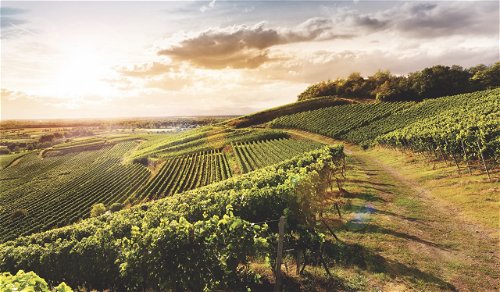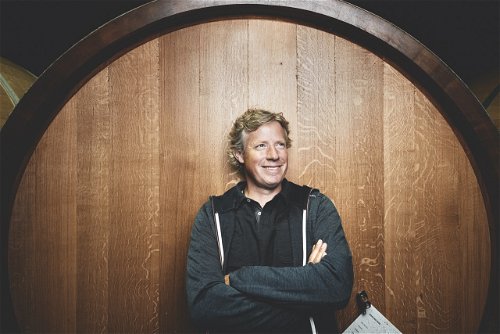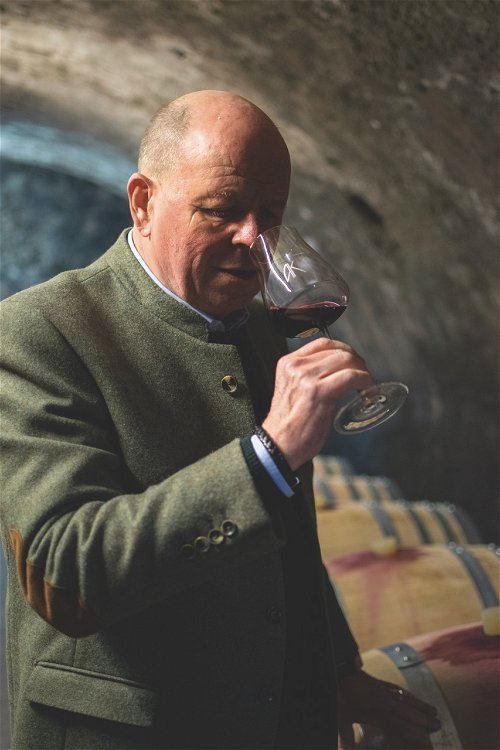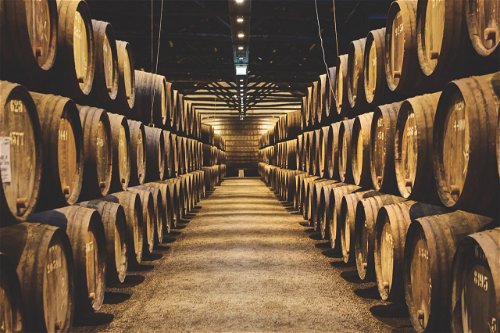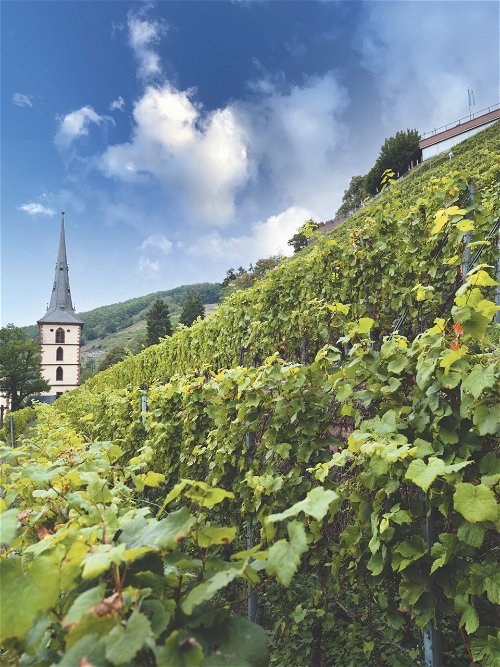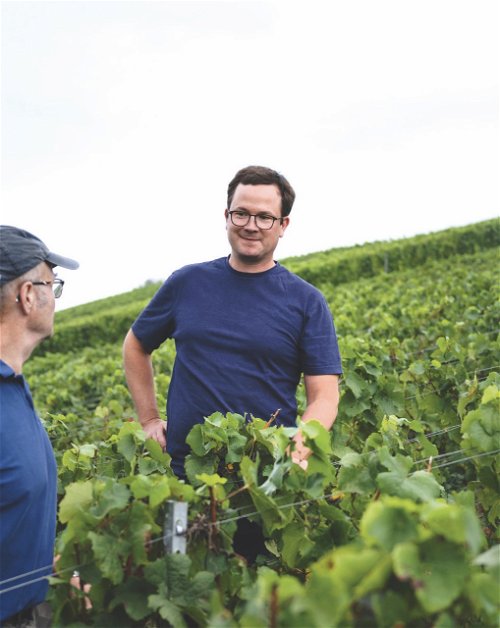The German Pinot Noir miracle
For a long time, Germany's Pinot Noirs eked out a shadowy existence. But for some years now they have been considered the first alternative to wines from Burgundy. What happened?
In 1963, journalist André Simon and wine merchant Fritz Hallgarten wrote a book to (re)introduce German wine to the English-speaking public of the post-war period. On 192 pages, the authors of "The Great Wines of Germany" describe the best Rieslings from the Rhine, Main, Nahe and Moselle. They devoted four and a half pages of the book to red wine, with quite detailed information on where to find the best Pinot Noirs. The final note that concludes this small section, however, is sobering:
To end this chapter, we must frankly confess that we cannot feel enthusiastic about German red wines.
- We must openly admit that we cannot feel any real enthusiasm for Germany's red wines.
A little more than 50 years later, a no less illustrious wine author in English comes to a completely different conclusion. In the Financial Times of April 20, 2018, Jancis Robinson writes enthusiastically about a tasting of German Pinot Noir in London - and concludes with an appeal: "Buy German Pinot Noir now before it follows burgundy into the unaffordable stratosphere."
TO TASTING
Element 1: Low yields, farewell to old clones
What exactly has happened in the past 50 years? Werner Knipser, one of the fathers of the German Pinot Noir miracle: In 1974, we planted the first Pinot Noirs for our winery, which were Geisenheim seedlings, I can't even say what kind of clone - but after only a few years they proved to be far too rich-bearing. The first building block that allowed the Pinot Noir to be raised to another level was the departure from the Pinot Noir selections of the post-war period: "Hopeless," says Paul Fürst, a second pioneer, had been wanting to press a high-quality Pinot, for example, from the "Ritter" clones that were widespread in the sixties and seventies. "In Bürgstadt, on the light red sandstone soils, there has always been a tradition for red wine. Then, from 1977, we turned even more to Pinot Noir, and when there was a rounding out in the village in 1983, we planted old German genetics in the new plantings, which also came from the Ritter Vineyard, but were looser-grained and yielded only half as much as the usual clones."
Element 2: The barrique barrel
Probably the first to use a barrique barrel on German soil was Fritz Keller of the restaurant and winery "Schwarzer Adler" from Oberbergen. Thanks to his father's good contacts with Charles Rousseau, Keller was able to visit Gevrey-Chambertin as early as the 1970s - unusual for the time. At home, he first put a red wine in a Burgundy pièce in 1979 - and promptly got a brush-off from the state quality wine testing agency, which refused to give the wine an official test number because of the wood tone. For this reason, Keller's Pinot Noirs from the barrique barrel remained "table wines" until the end of the 1980s.
Similar rejection happened to others, and to this day, with exemplary wines; for example, the réserves of the legendary Kallstadt winemaker Bernd Philippi, and also the members of the H.A.D.E.S. group in Württemberg. Nevertheless, in the course of the eighties the small oak barrels gradually popped up in more and more cellars, and groups such as the German Barrique Forum or H.A.D.E.S. were formed to promote the exchange of experiences. Slowly but steadily grew the knowledge of handling and the method of pressing necessary for oak contact.
The first German Pinot Noir to cause a sensation internationally, at least among a small circle of insiders, was the 1985 Assmannshäuser Höllenberg from August Kesseler. Kesseler was able to build on the reputation of Assmannshausen. If there was a German Pinot Noir provenance that had a certain standing even in the post-war period, it was the Rheingau red wine enclave known for the ripe vintages from Kloster Eberbach.
Kesseler filled his Barrique Pinot Noir into a 0.5-litre bottle and put it on the price list for an unprecedented 30 German marks. Unlike many colleagues, he received an official test number for this radiantly fruity wine: "The viticultural office itself, wine commissioner Reinhold Schwalbach, winemakers Norbert Holderieth and Count Matuschka-Greiffenclau thought it was exciting and courageous of me," Kesseler recalls, "the testers couldn't help themselves!"
Element 3: The view of Burgundy
With the increasing successes in the development of the wines came another step during the 1990s: "The next milestone was the farewell to German seedlings," suggests Werner Knipser. In 1994, the Palatinate native planted the first 80 acres with nine different Burgundy clones in the Großkarlbach site "Im großen Garten". For a long time, it had been said that the French clones were too susceptible to rot and ripened too late - but this turned out to be a mere protective claim by the German grapevine grafters. Soon Knipser also ventured into planting vines from a Burgundian mass selection, and this remains his preferred genetics today. Paul Fürst also planted Dijon clones in the mid-nineties and then, at the end of the decade, vines from the Sélection massale of a French vine nursery. The gaze turned more and more to France: "We read what Henri Jayer had written about winemaking," Paul Fürst recalls. Soon there were also the first direct contacts.
In the early noughties, for example, a three-way tasting took place on Sylt: Comte de Vogüe - Gantenbein - Fürst. The network grew quite quickly, and Burgundy's younger generation of winemakers welcomed their German colleagues with great openness. Among the Pinot Noir experts active today, there is hardly anyone who has not worked in Burgundy and maintains regular contacts there.
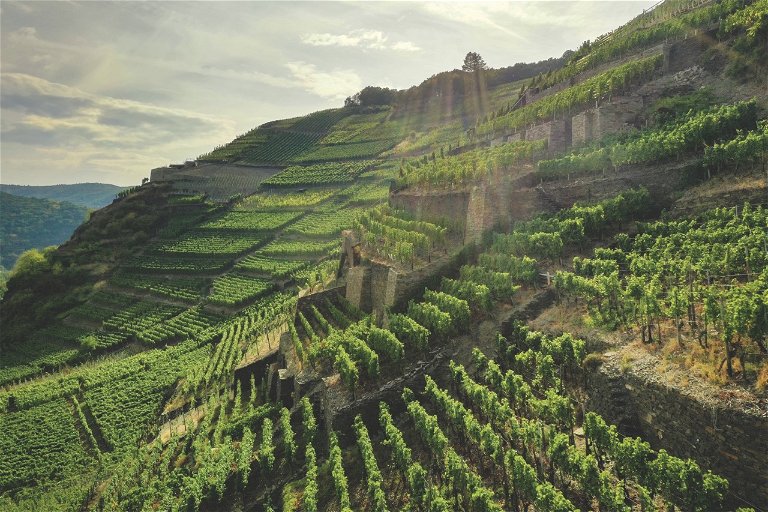
Element 4: Global warming and the discovery of freshness
Without a doubt, global warming has also played its part in making Germany's Pinot Noir today something far removed from 30 years ago. "1998 was the last vintage with a certain hardness in the tannin," sums up Paul Fürst, for example, and his son Sebastian adds: "Since I came back home in 2007, I haven't experienced a vintage that wasn't fully mature." However, the Global warming also presents problems. And it is certain that its effect would have remained much smaller had it not been preceded by more than 20 years of thought about the grape variety.
The development of Burgundy in the Ahr Valley can be seen as exemplary: once the northernmost growing region for Pinot Noir, the winegrowers used to fight particularly doggedly for every degree of Oechsle. Then, during the noughties, on the steep southern slopes of the valley, wines were produced all at once that had 14.5% alcohol by volume, or more. Deeper foliage, earlier harvesting, the use of Rappen in fermentation, reduction of the proportion of new wood in ageing - winemakers have learned to turn all such adjusting screws, and not only in the Ahr, to preserve the freshness of their Burgundies and give them even more finesse.
One can also wonder if winemakers would have been similarly bold, at times even radical, in focusing on the theme of elegance if global warming had not forced this focus. Last but not least, Pinot is now also moving into cooler and cooler regions. The latest results, for example from the Ruwer Valley in the Middle Rhine region or from Saxony, indicate that there is still great potential here.
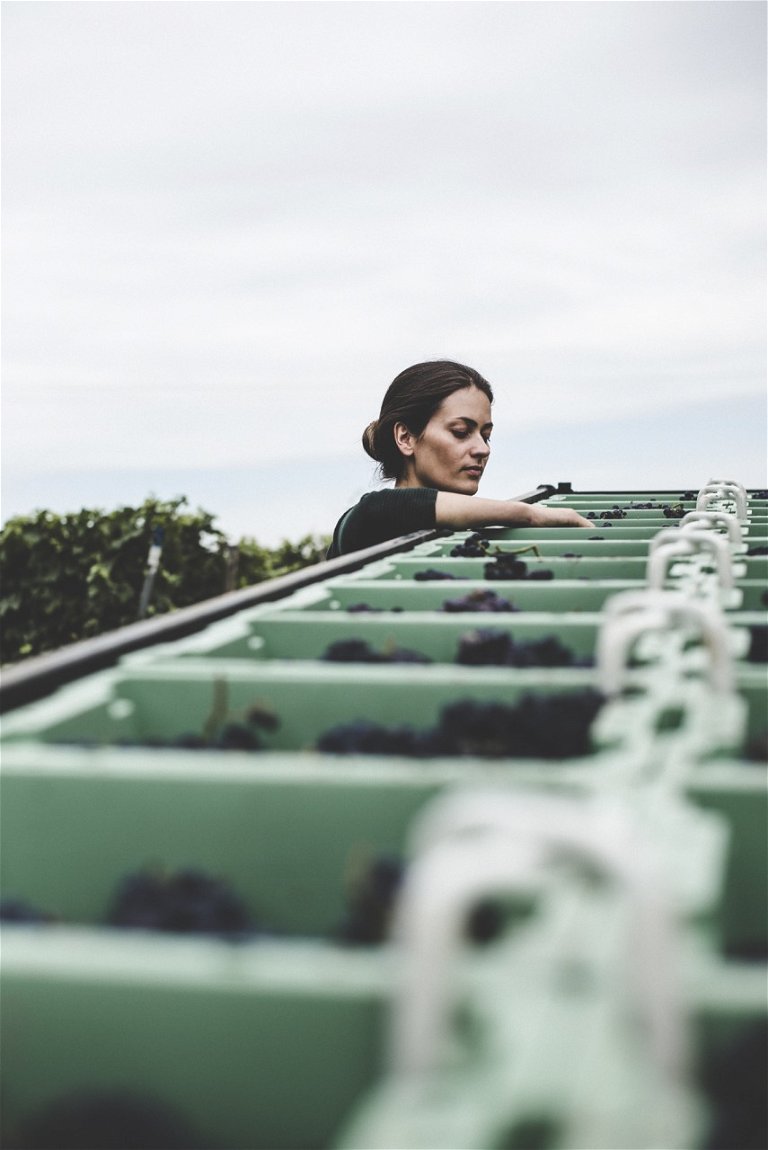
Element 5: The pull of the Burgundy bull market
The international appreciation of the last few years is also influenced by the fact that classic markets with an affinity for Burgundy, such as the UK or Benelux, can hardly quench their thirst for Burgundy, despite the exploding prices. Among the alternatives, German Pinots are at the forefront. And so today, Germany's Burgundy winemakers face the problem of balancing the interest of regular domestic customers against global demand. In most wineries, about half of the Pinot Noir is already exported, for example at Friedrich Becker in Schweigen: "with an upward trend. Sebastian Fürst sees the export demand "continuously increasing for 15 years already". Currently, its export share is 40 percent. The 35 countries to which Fürst delivers also include exotic countries such as Guatemala and Malaysia. "At the same time, we ourselves are completely passive," says Fürst, "as a family business, our priority is the vineyard."
Konrad Salwey from Oberrotweil works the foreign markets similarly extensively. And although the Kaiserstühler is one of the few German Pinot experts that really presses a lot of great growths - from its top sites Eichberg, Henkenberg and Kirchberg he produces between 15,000 and 25,000 bottles, depending on the vintage. The wines are also being snatched from his hands; 35 percent of the volume goes for export, "Denmark, Switzerland, Canada, Belgium, and recently quite strongly Italy."
Almost all of the winemakers interviewed by Falstaff report that they are unable to deliver the quantities demanded by foreign countries: "We have to cut orders by 80 percent in some foreign markets," reports Fritz Keller, for example.
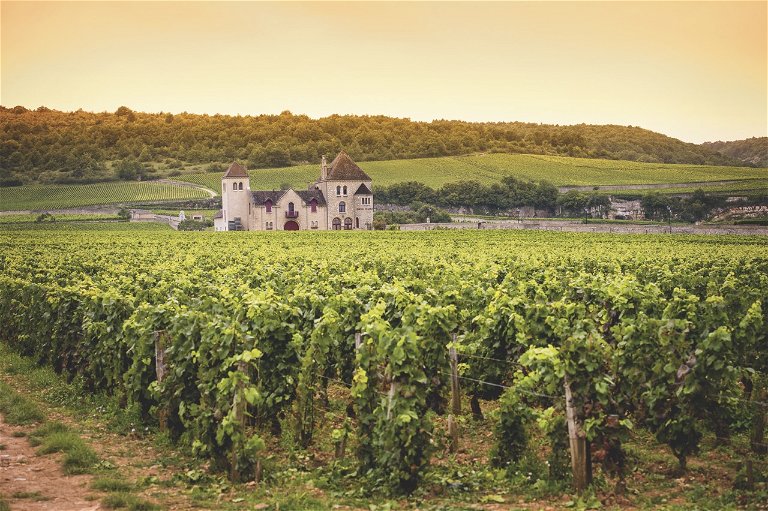
Stylistic classification
But where does Germany's Pinot Noir stand from a stylistic point of view? There were two main reservations against the old type of Pinot Noir: firstly, its light colour, and secondly, a certain "sweetness", which, mind you, also occurred in the dry wines without residual sugar, and this even in the young stage.
Today, the light colour occurs almost only in wines from very light, stony soils - and there it is even considered rather positive as evidence of authenticity. In any case, it is no longer an indication of a lack of extract. And the incongruously sweet impression of earlier Pinot Noirs has completely disappeared. Presumably, this sweetness was the result of an unfortunate interplay of high-yielding clones that with little extract, with chaptalisation and the tendency of winemakers to delay harvest and also accept some overripeness. But today's viticulture is quite different.
Nevertheless, the really good German Pinot Noirs are not Burgundy imitations. Even if many winemakers now have French seedlings in their vineyards and have learned a lot from the experience of their Burgundy colleagues in the cellar. The best, and especially internationally sought-after Pinot Noirs, are above all Burgundian in the way they express their local conditions. You don't have to explain to any Burgundy connoisseur that a Corton doesn't taste like a Chambertin. Nevertheless, both are Burgundies. Similarly, Pinots from, say, Assmannshäuser Höllenberg or Bürgstadter Hundsrück are strong individuals that are sensorially distinct, yet both are Burgundies.

It is exciting to see that the esteem in which German Pinot Noir is held today has certainly been accorded to it in the past. For example, Charles Trousset's encyclopedia mentions that from the 1880s the red wines of Ingelheim were similar to the Burgundies "of the second and third class". In this reference work, Richebourg, Corton, De la Tâche (sic!), Romanée-Saint-Vivant, Romanée-Conti and Clos de Vougeot are counted as first-class Burgundies. If one looks at what else comes from Burgundy below these most exposed Grands Crus, one must interpret the statement "second and third class" as a remarkable recognition.
And Ingelheim is by no means the only place to which French authors paid respect in the 19th century. About the red wines of Königsbach, in his "Topographie de tous les vignobles connus" (Paris 1816), André Jullien, for example, judged that the white grapes generally produced better results in the Mittelhaardt region. Thus, they produce exceptionally good red wines in the vineyards of Königsbach and in some other places ("on en fait de fort bons dans les vignobles de Koenigsbach, à une lieue un quart de Neustadt, et dans quelques autres endroits").
The ten last vintages
2022
Fruit-driven and full-bodied, a final rating is still pending. ****-*****
2021
Rain, mildew and low yields - rather tight, sinewy wines, but with very good balance. ***-****
2020
Dry year, somewhat variable, best wines for 20 years and more. ***-*****
2019
Fresh fruitiness and depth, on average the best year of the decade. *****
2018
Despite the warm summer, not fat, but dense. ****
2017
Rain at harvest limited in some places the potential, best wines long runners. ***-****
2016
A vintage that has produced balanced wines. ****
2015
Warm summer, yet good in freshness, Rheingau outstanding. ****-*****
2014
Even if the cherry vinegar fly attacked Dornfelder rather than Pinot: rather medium structured. Now good to drink. ***
2013
Cool and classic in the best sense: the wines age excellently. ***-*****
older good years
2010 (****), 2009 (****), 2005 (****-*****), 2003 (***-*****), 1997 (****-*****), 1990 (*****)
Outlook
The German Pinot miracle did not fall from the sky. But what will happen next? Between Jancis Robinson's quoted 2018 statement and today, prices for German Pinot Noirs have indeed risen across the board by an estimated 30, sometimes 50 or even 80 percent. Thus, despite the pull from abroad, they are still far from the "unattainable stratosphere" bracket. Most winemakers seem to be quite comfortable with this: "From my perspective, I wouldn't like to make speculative statements," Fürst sums up. "It took us decades to get noticed. In the meantime, a few kinks have been worked out by our parents' generation and also by the fact that so many young people are now here and stepping on the gas. For people who like it delicate, German Pinot Noir is certainly an alternative." - A statement as dust-dry, nuanced and precise as the wines.

